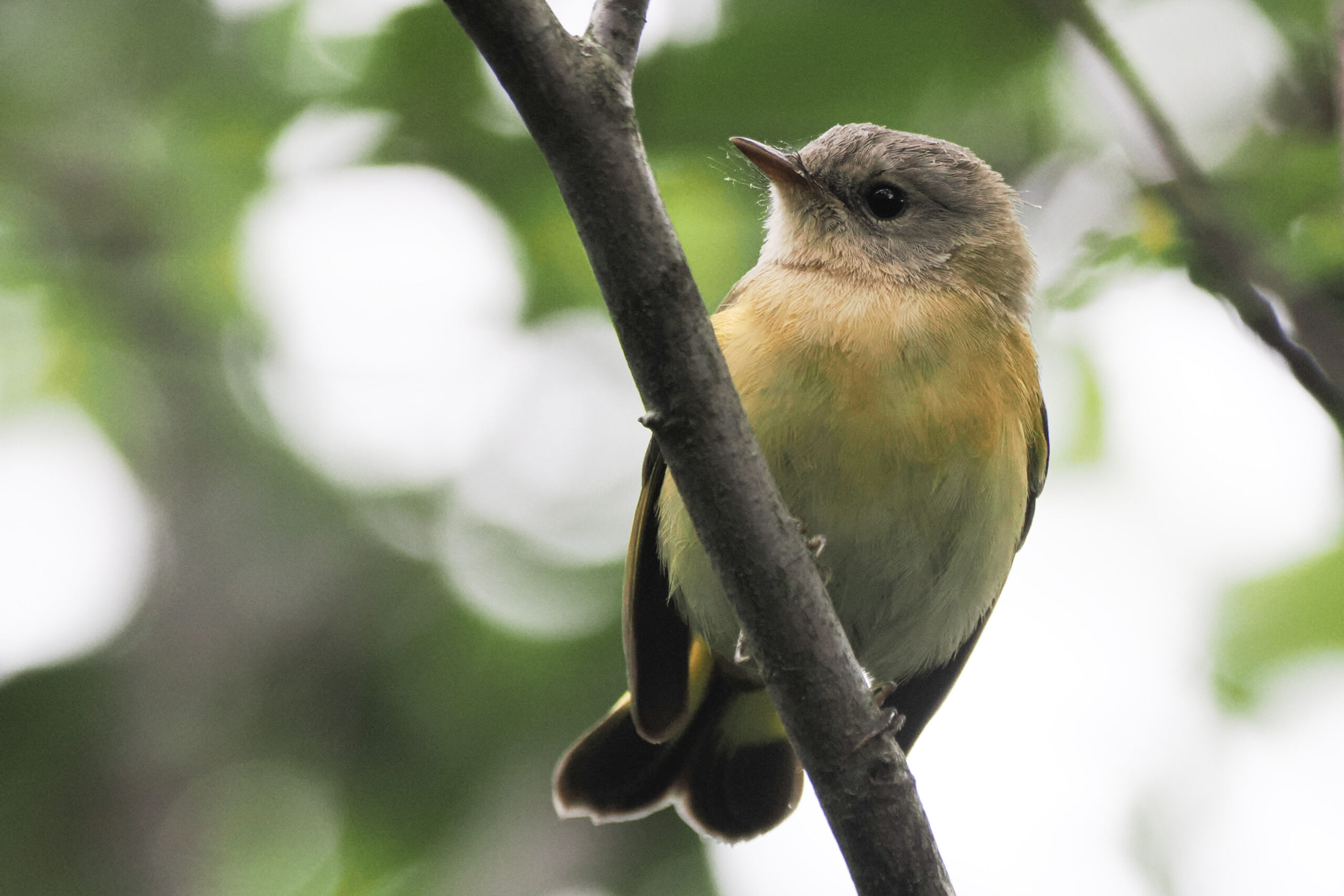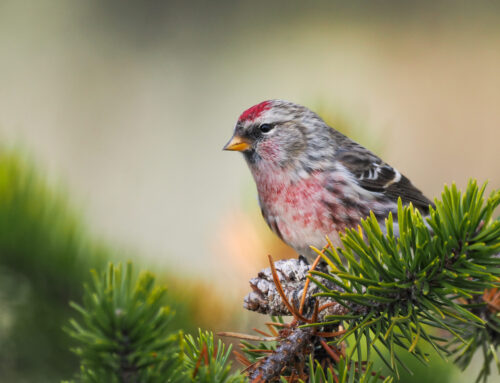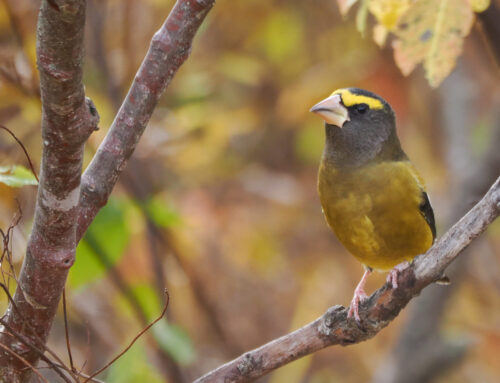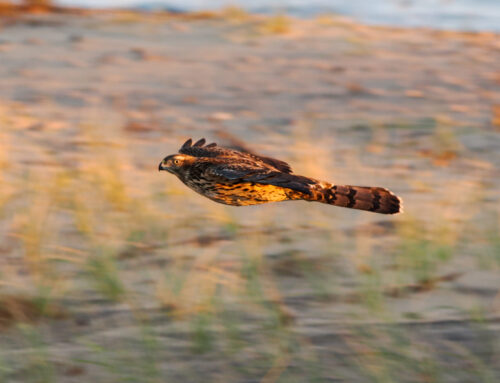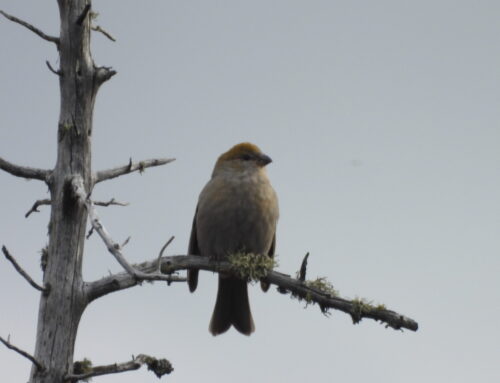Frank (the waterbird counter) and I have been up at Whitefish Point for a little over a week now, kicking off the WPBO fall 2025 count season with some exciting changes and fun birding highlights. Among these changes is a new fall count; a morning flight survey up on the raptor deck focused on incoming songbird migrants. The count runs from Friday-Sunday each week, starting 15 minutes before sunrise and lasting for the first 2-3 hours of the morning. I’ll be staffing that count, so feel free to stop by and see what migrants are moving! You can follow the count at the WPBO – Morning Flight Trektellen page.
Thus far this season, I’ve conducted the songbird flight count on three days (8/16, 8/17, and 8/22). Upon settling in for my first count on the 16th, the thing that grabbed my attention before any bird was a black bear, roughly 50 meters downslope from the deck. It caught sight of me and scampered away, but I was able to capture a photo before it did. It was my first sighting of a black bear at the Point itself, so that was exciting!
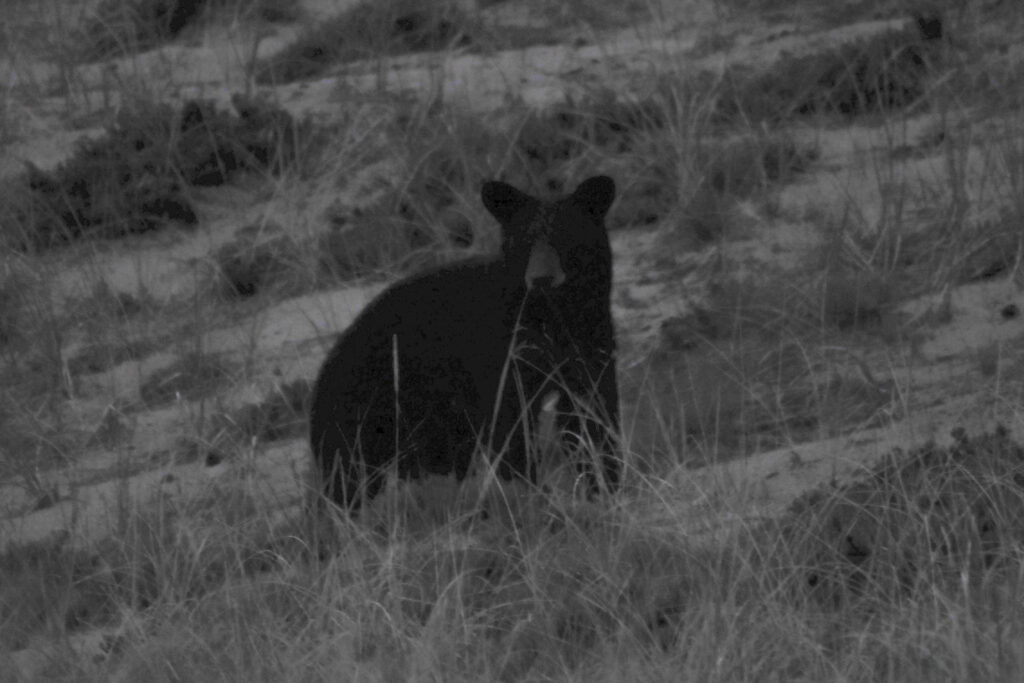
Black Bear seen from WPBO raptor deck. Photo by Clay Bliznick.
As far as bird numbers on the count, the variety of songbirds has been better than I expected at this early stage. Particularly, there’s been some early winter finch movement, mainly American Goldfinches, Purple Finches, and Pine Siskins, but also small flocks of Red Crossbill, White-winged Crossbill, and Evening Grosbeak. There’s been a smattering of warblers on the first few counts as well. Most individuals have been Yellow-rumped or Cape May Warblers, but we’ve already picked up 12 species of warbler from the deck. Our biggest songbird migrant thus far has been American Robin, where we’ve had 88 migrating past the raptor deck on the 22nd. The biggest non-songbird highlight on the count was the Great Egret that passed by both the raptor deck and waterbird shack on the morning of the 16th, my 200th bird species seen at the Point!
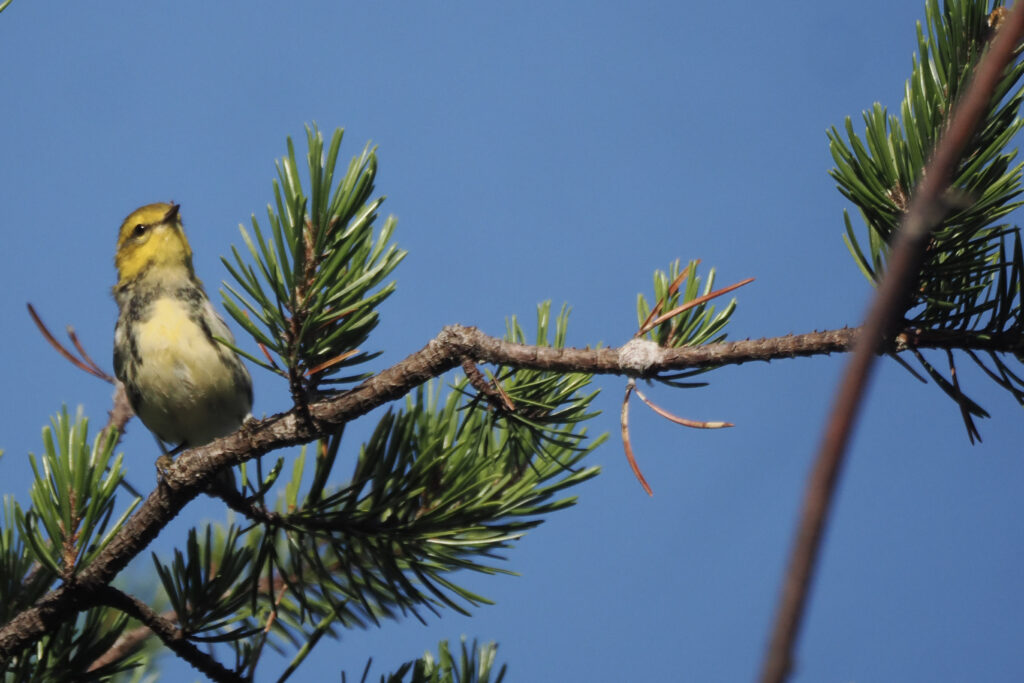
Black-throated Green Warbler. Photo by Clay Bliznick.
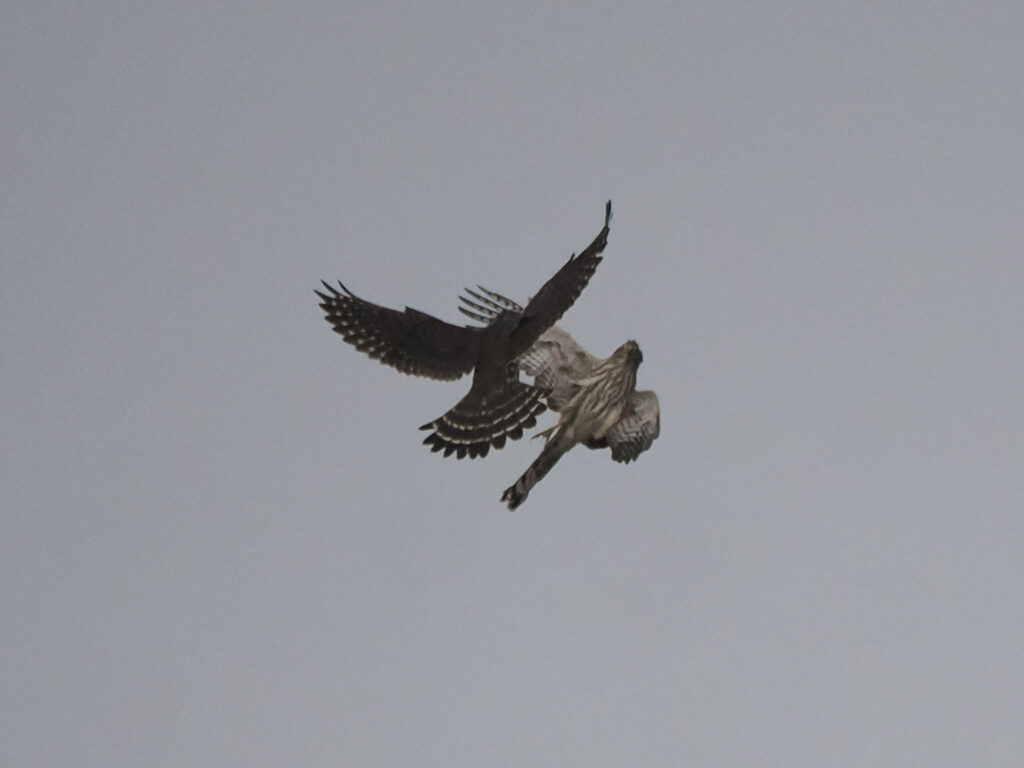
Merlin and Sharp-shinned Hawk battling it out. Photo by Clay Bliznick.
Another change from last fall at least, has been the wetter conditions leading to an increased abundance of mosquitoes. If you’re planning a trip up here in the near future, make sure to prepare accordingly. You will most certainly be greeted by a cloud of them on the boardwalk, in the woods, or even behind the Owl’s Roost at the bird feeders. Fortunately, the birding has been great and mostly mosquito-free out on the beach, up on the raptor deck, and at the harbor to the south, so there’s still plenty of options to bird! With a front moving through on Saturday followed by some shifting weather conditions, the chances for songbird and waterbird movement over the weekend are looking pretty decent.
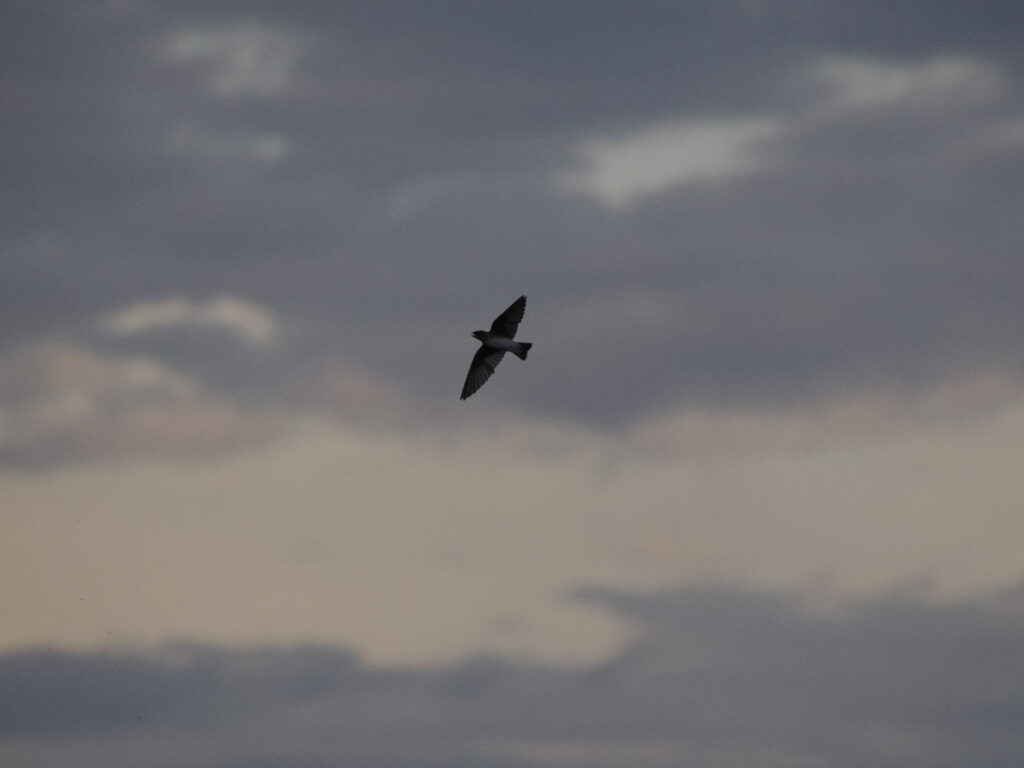
Northern Rough-winged Swallow in the evening light. Photo by Clay Bliznick.
~ Clay Bliznick
2025 Fall Field Ornithologist
Featured photo: Female American Redstart. Photo by Clay Bliznick.
Track the morning flight counts on Trektellen.
Keep up with the 2025 Fall Field Ornithologist’s weekly blog posts and follow WPBO’s social media (Facebook, Instagram, and X).
Join Clay for one of his WPBO Migratory Bird Walks offered every weekend through November 15.
Learn more at wpbo.org/events.

Clay Bliznick, MS: 2025 Fall Field Ornithologist
Clay worked as the WPBO fall field ornithologist in 2024 and is excited to return for the fall of 2025. He first took an interest in birds during a high school trip to Alaska, where he was struck by the flamboyance of magpies, the sleek, penguin-like appearance of alcids, and the sheer number of waterbirds residing along the coast. He dove headfirst into the world of birding while an undergraduate at the University of Kentucky, spending every free second exploring his home state for exciting new birds and places. Afterwards, he attended graduate school at Murray State University and wrote a master’s thesis examining the response of bird communities to environmental factors in Western KY bottomland hardwood forest restorations. For the last several years, Clay has traveled throughout the US working with birds in varying capacities, including nest monitoring of Florida Grasshopper Sparrows and Crested Caracaras, conducting surveys of Swallow-tailed Kite post-breeding roosts, and collecting breeding bird data in North and South Dakota for the Bird Conservancy of the Rockies.

